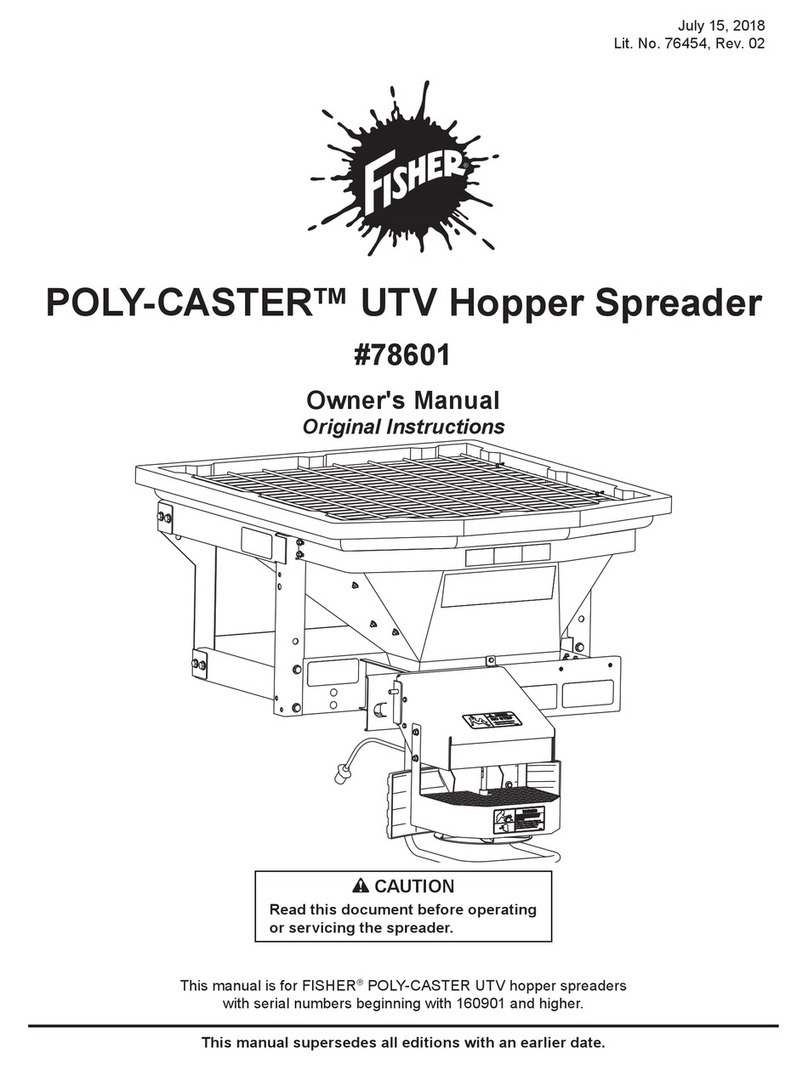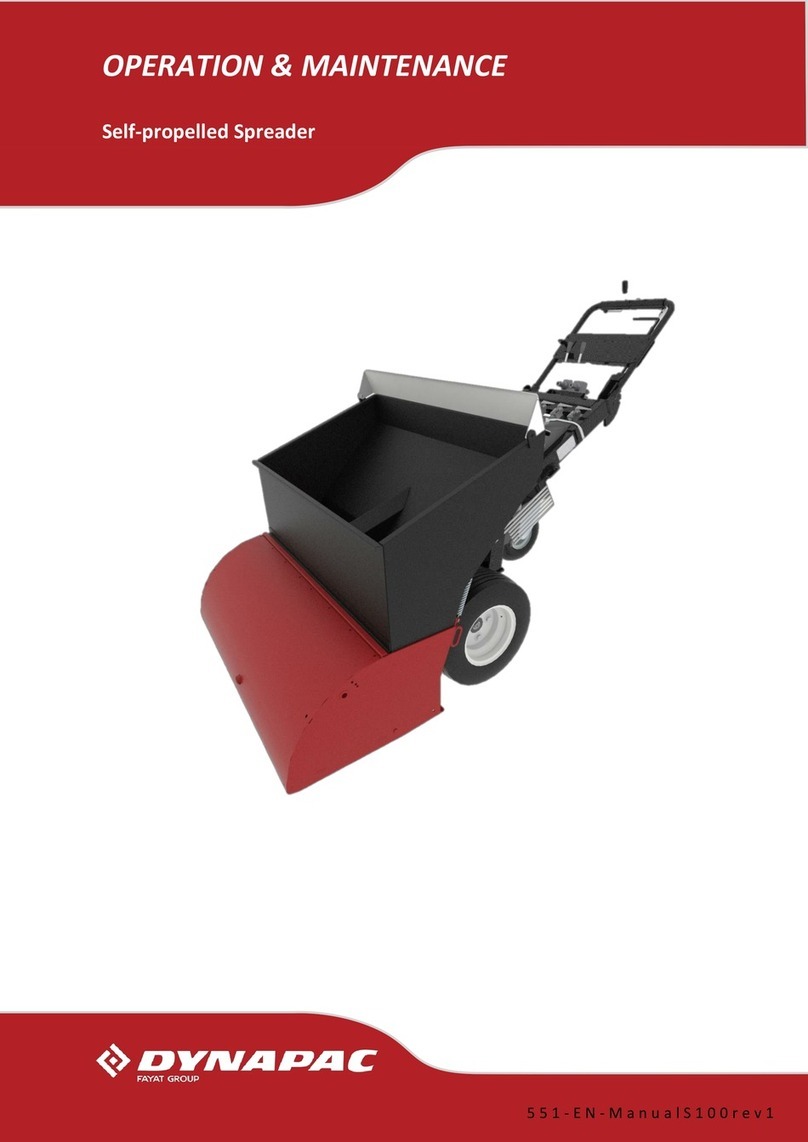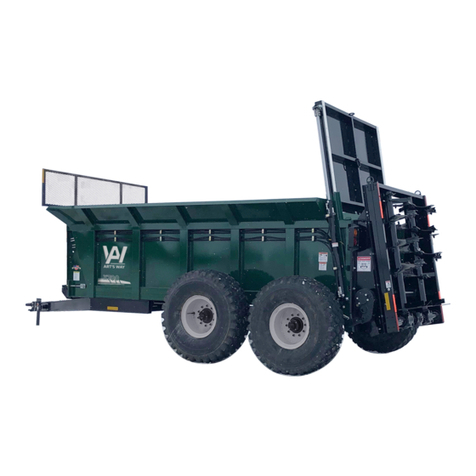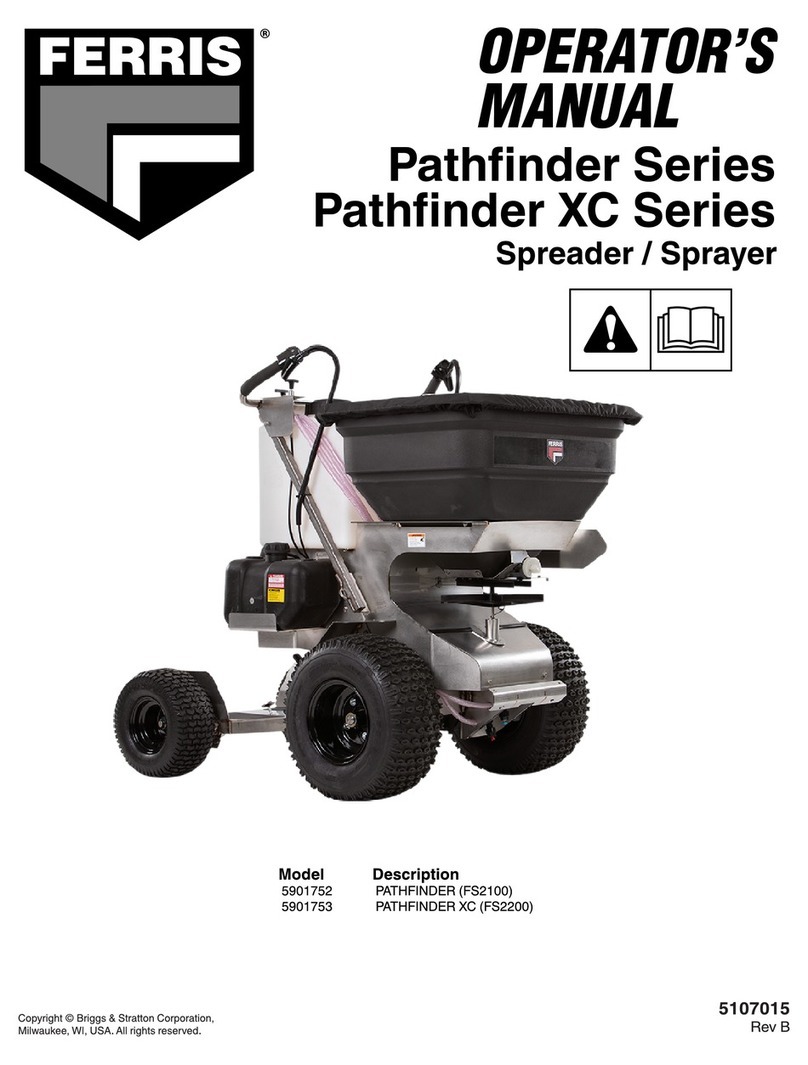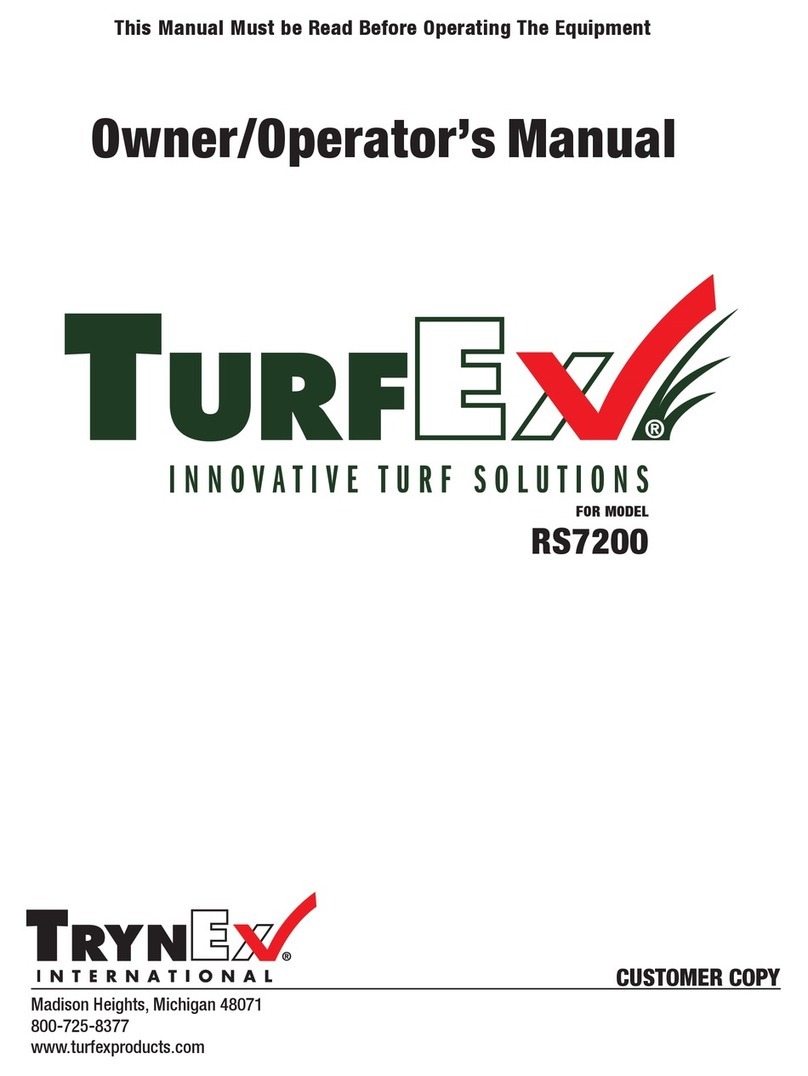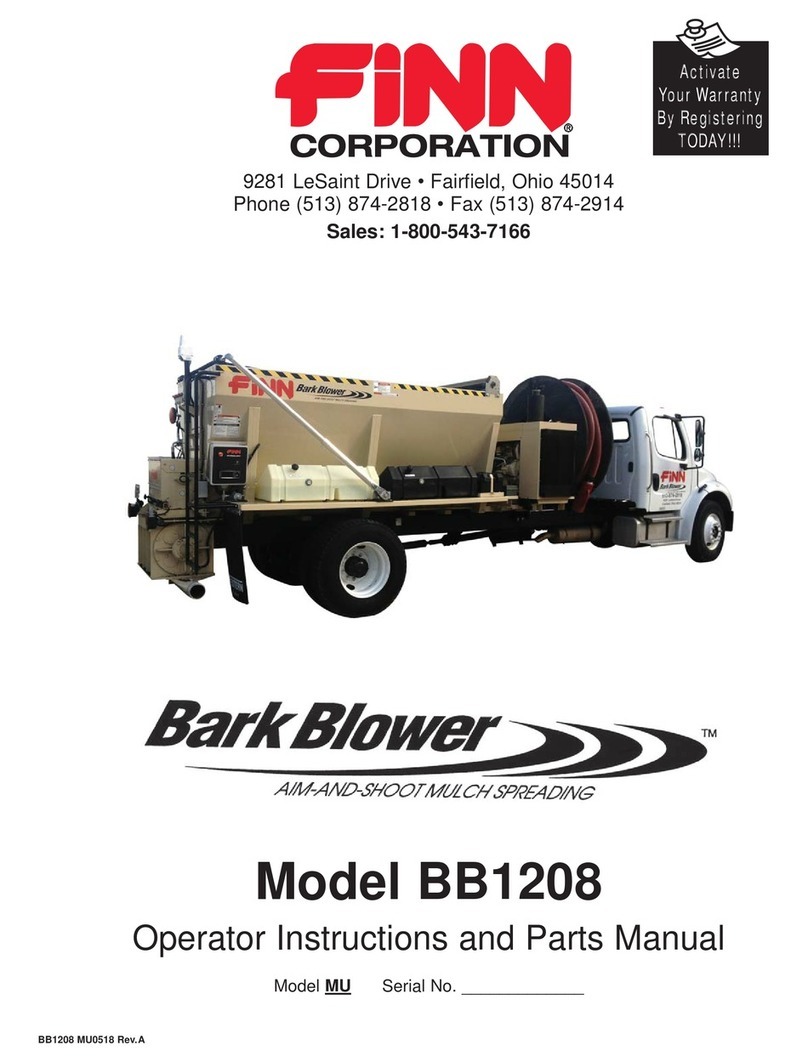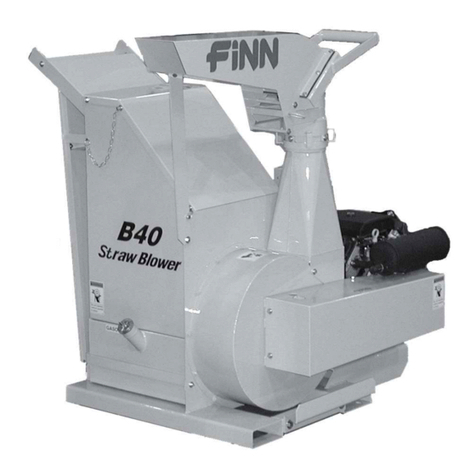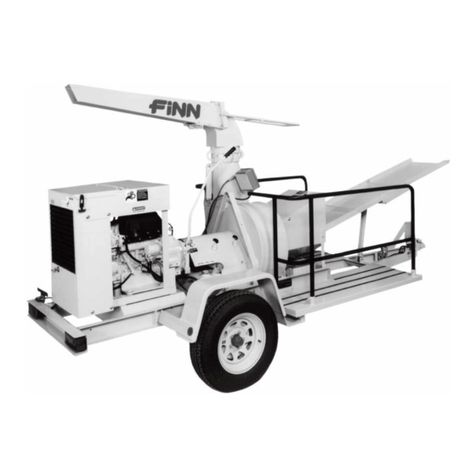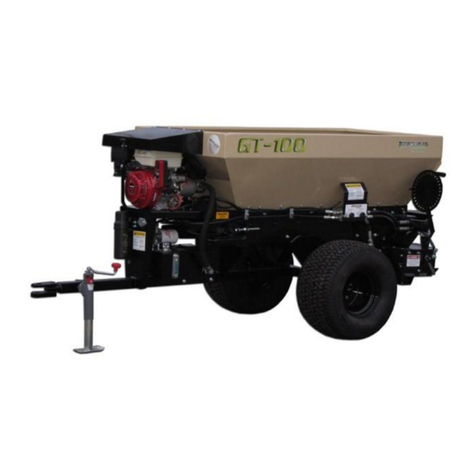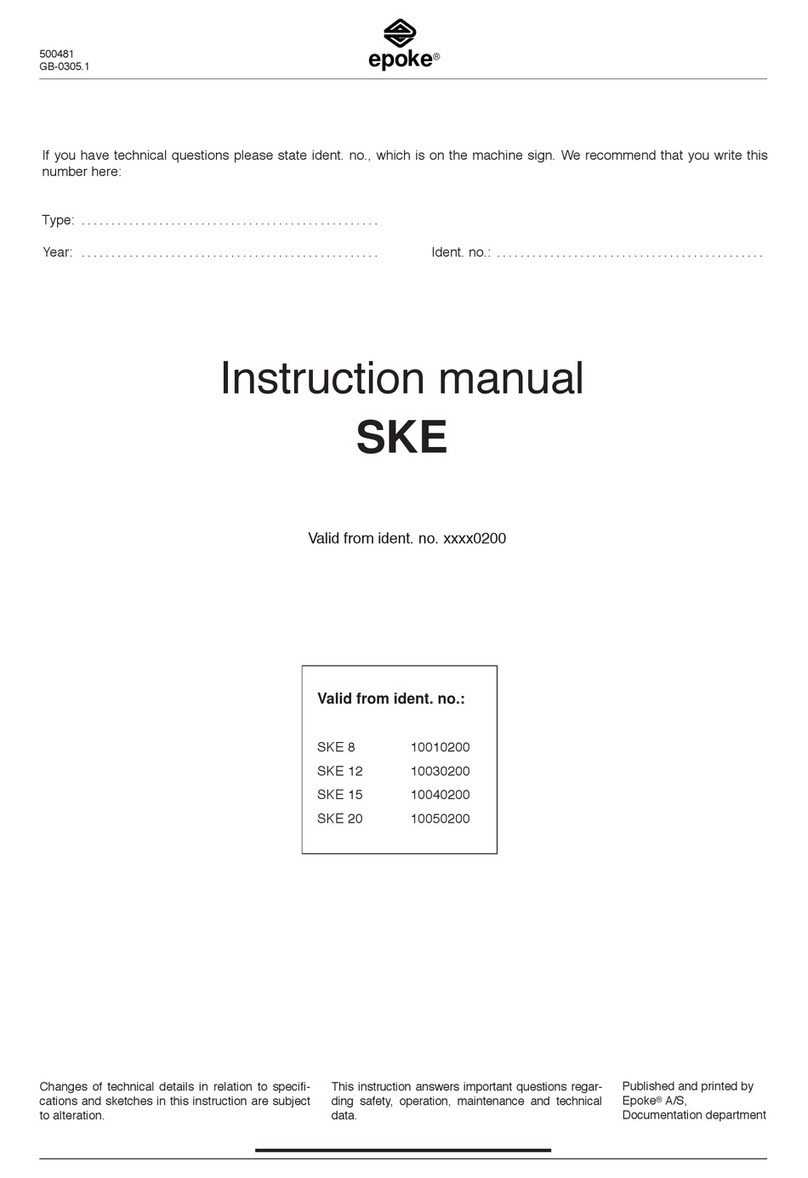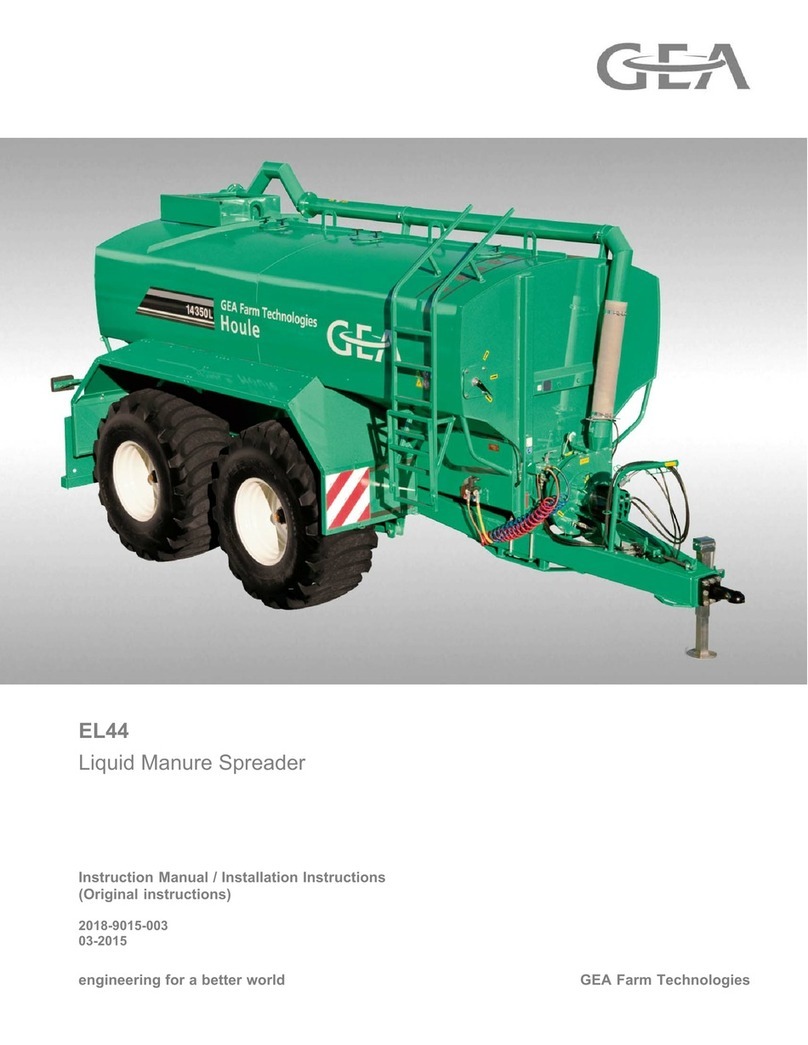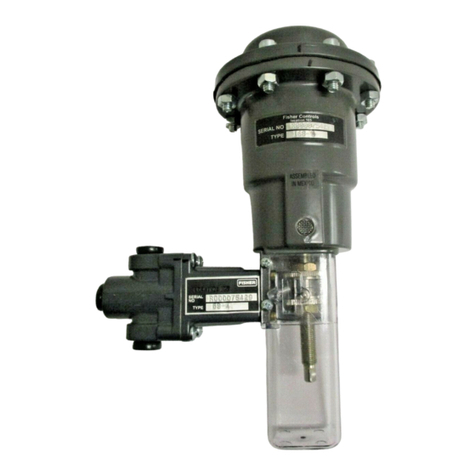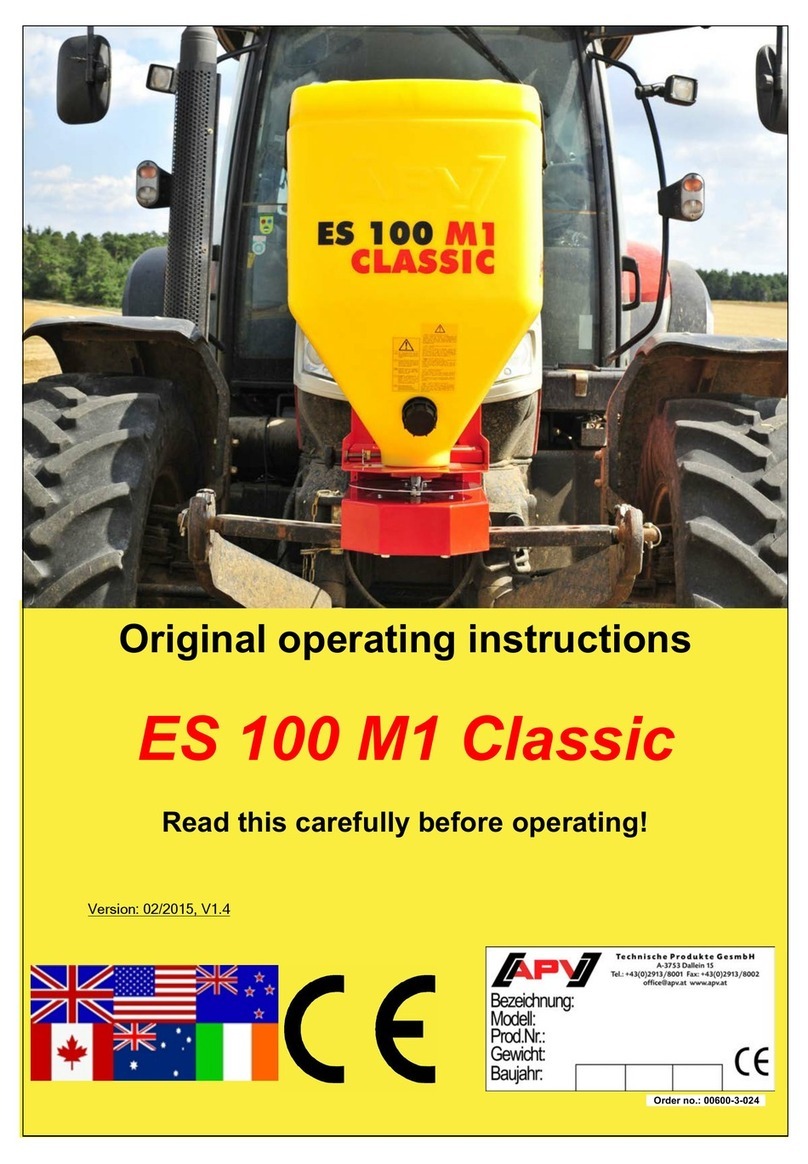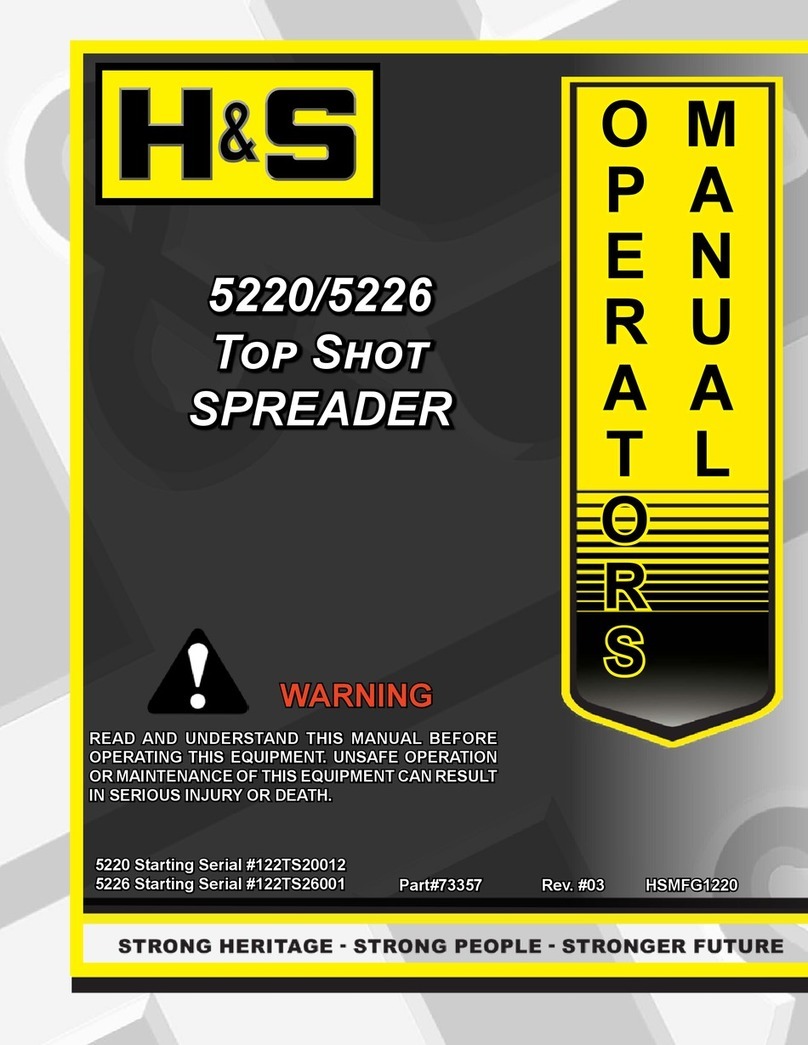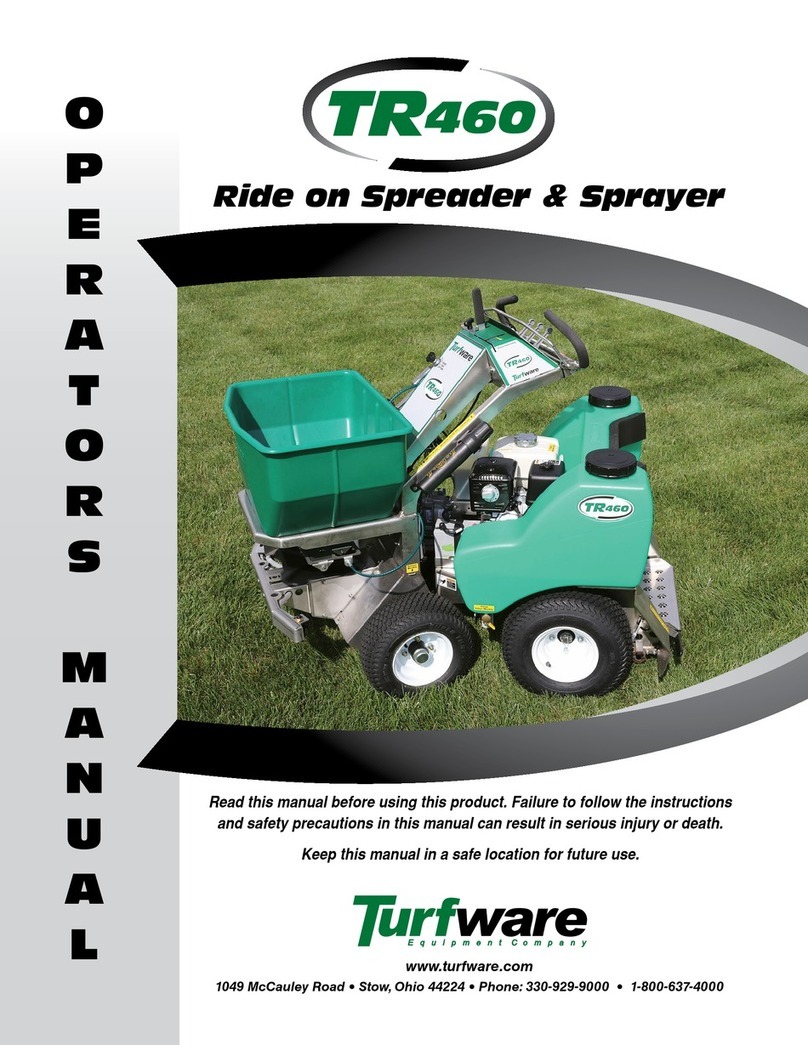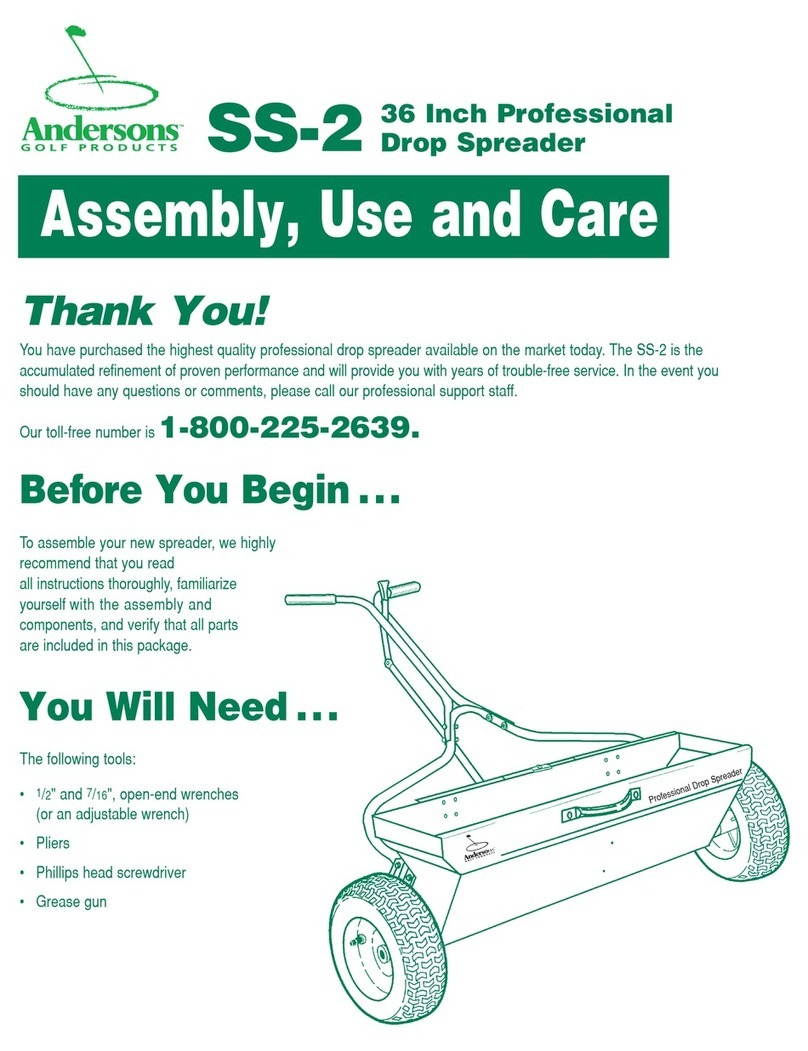
4
III. MAINTENANCE:
1. Before servicing the
machine, turn off engine and
allow all moving parts to
stop. To prevent accidental
starting, disconnect battery
cables. Tag the engine oper-
ating area to show that the
machine is being serviced.
Use lockout/tagout proce-
dure (OSHA 29 CFR 1910.147).
2. Take extreme care when
adjusting or replacing
knives. Knife edges are
very sharp and can cause
severe bodily injury.
3. Radiator maintenance: Liquid cooling systems build
up pressure as the engine gets hot. Before remov-
ing radiator cap, stop the engine and let the system
cool. Remove radiator cap only after the coolant is
cool. Mulch may accumulate in the radiator fins after
extended usage based upon mulch properties. The
radiator should be inspected prior to daily start-up
and cleaned by pressure washing if obstruction is
present.
4. Battery maintenance: Lead-acid batteries contain
sulfuric acid, which will damage eyes or skin on con-
tact. Always wear a face shield to avoid getting acid
in the eyes. If acid contacts the eyes, flush imme-
diately with clean water and get medical attention.
Wear rubber gloves and protective clothing to keep
acid off skin. Lead-acid batteries produce flammable
and explosive gasses. Keep arcs, sparks, flames,
and lighted tobacco away.
5. Filling of fuel: Never fill the tank with the engine run-
ning, while smoking, or when near an open flame.
Never smoke while handling fuel or working on the
fuel system. The fumes in an empty fuel container
are explosive. Never cut or weld on fuel lines, tanks
or containers. Move at least 10 ft (3 m) away from
fueling point before starting engine. Wipe off any
spilled fuel and let dry before starting engine.
IMPORTANT: Be careful not to allow fuel, lubricant,
hydraulic fluid, or cooling fluids to penetrate into
the ground or be discharged into the water system.
Collect all fluids and dispose of them properly.
6. It is recommended that only authorized, genuine
FINN replacement parts be used on the machine.
7. Do not use either cold start fluid, if engine is
equipped with glow plug type preheater, or other
intake manifold type preheater. It could cause an
explosion or fire and severe injury or death.
8. Diesel fuel or hydraulic fluid
under pressure can pen-
etrate the skin or eyes and
cause injury, blindness, or
death. To check for such
leaks, use a piece of card-
board or wood instead of
your hand. Pressure may
build up in the hydraulic
system; use caution when removing the cap.
9. Some parts and assemblies are quite heavy. Before
attempting to unfasten any heavy part or assembly,
arrange to support it by means of a hoist by blocking,
or by use of an adequate arrangement to prevent it
from falling, tipping, swinging or moving in any man-
ner. Failure to do so could result in component dam-
age, or physical injury to someone.
10. If repairs require use of a torch or electric welder, be
sure that all flammable and combustible materials
are removed. Fuel or oil reservoirs must be emptied,
steam cleaned, and filled with clean water before
any cutting or welding on them is attempted. Do
NOT weld or cut on any tank containing oil, gasoline,
fumes, other flammable material, or any container of
which the previous contents were unknown.
11. Do not pressure wash this unit.
Do not pressure wash around any
control boxes, radio remotes or
control panels. Pressure washing
this unit can cause damage to the
electrical systems and components
and also cause the unit to not function. Pressure
washing injects water into sensitive electrical
components. To clean the unit, use a method that
controls the amount of water that is applied to the
surface of the unit.
